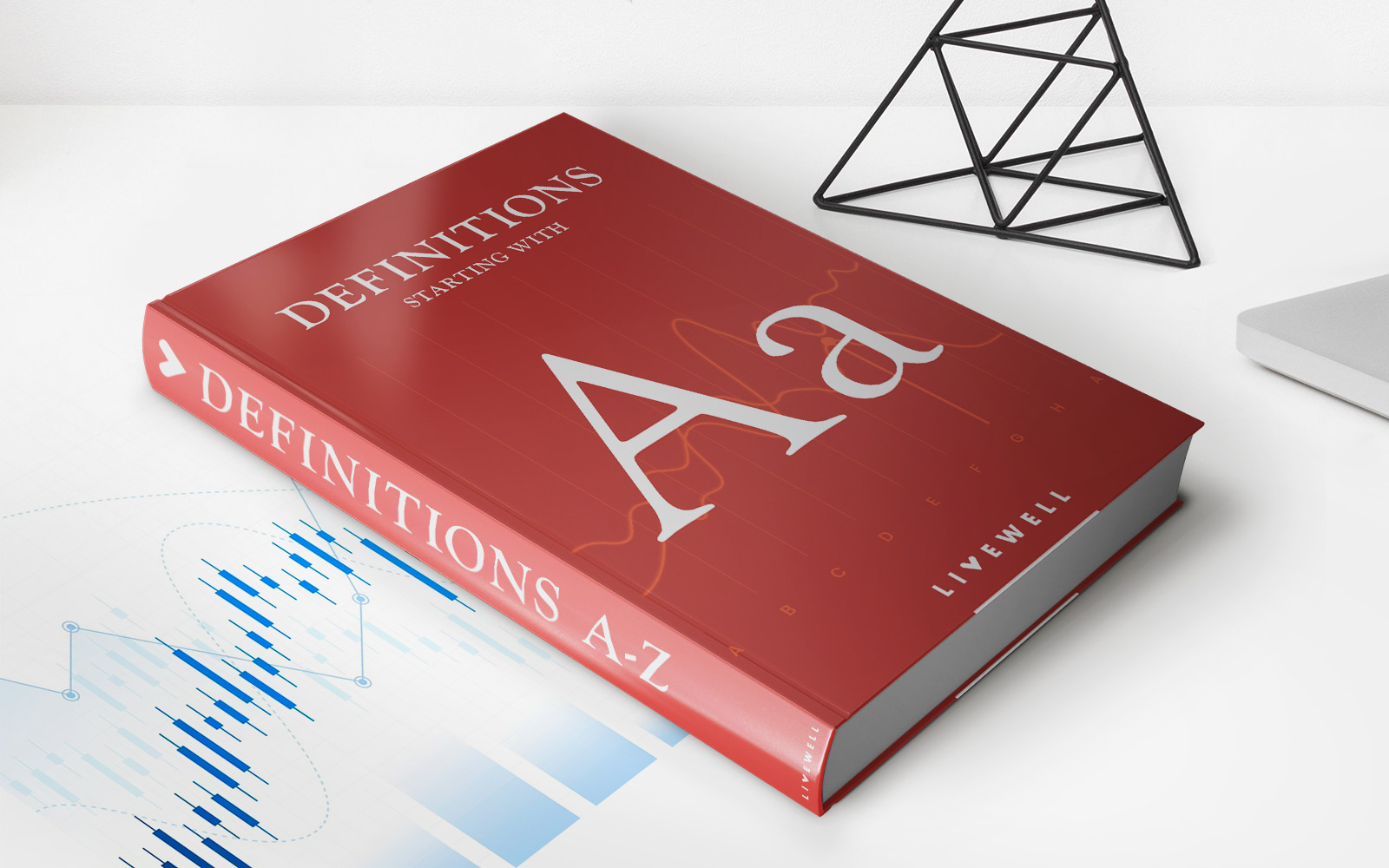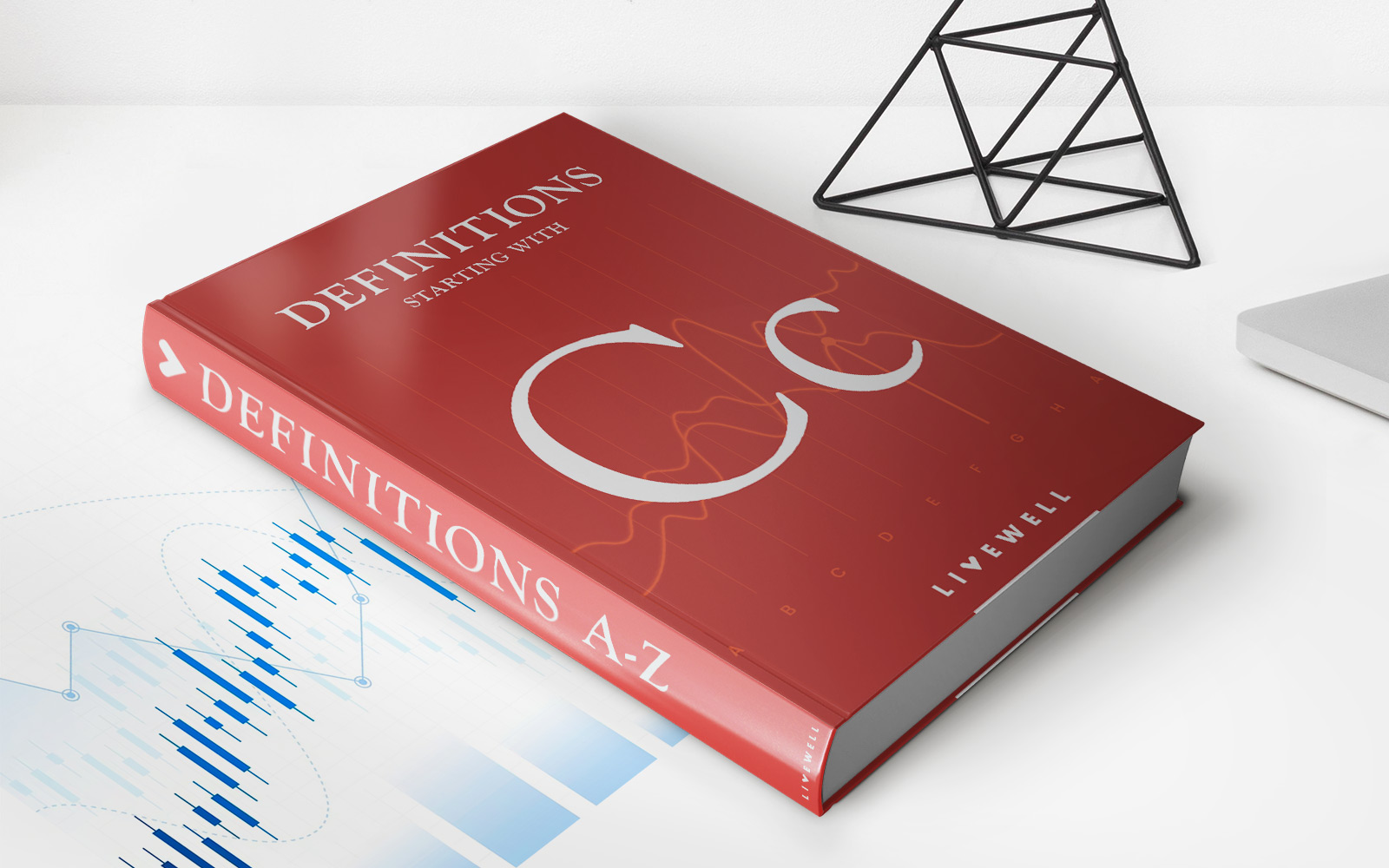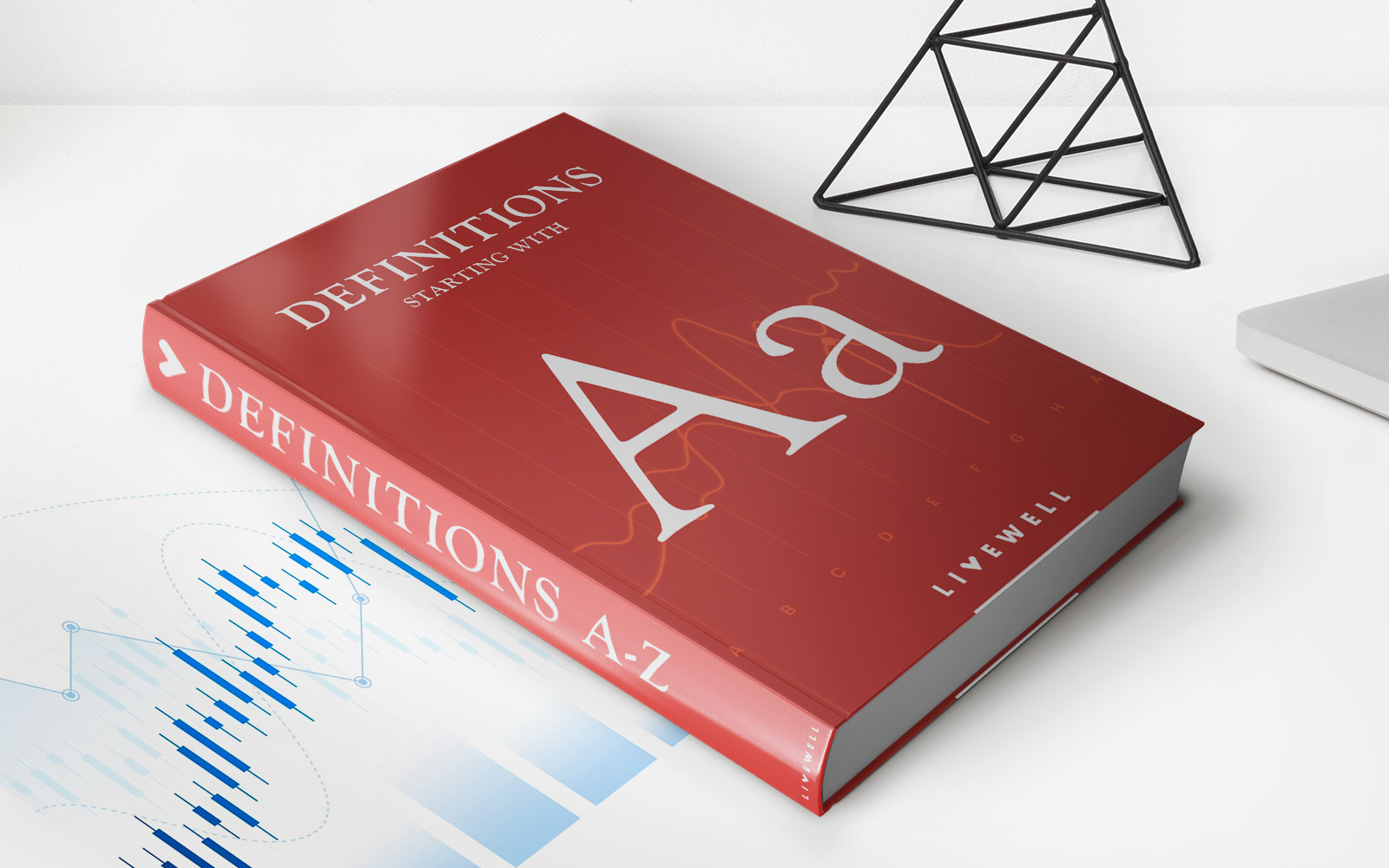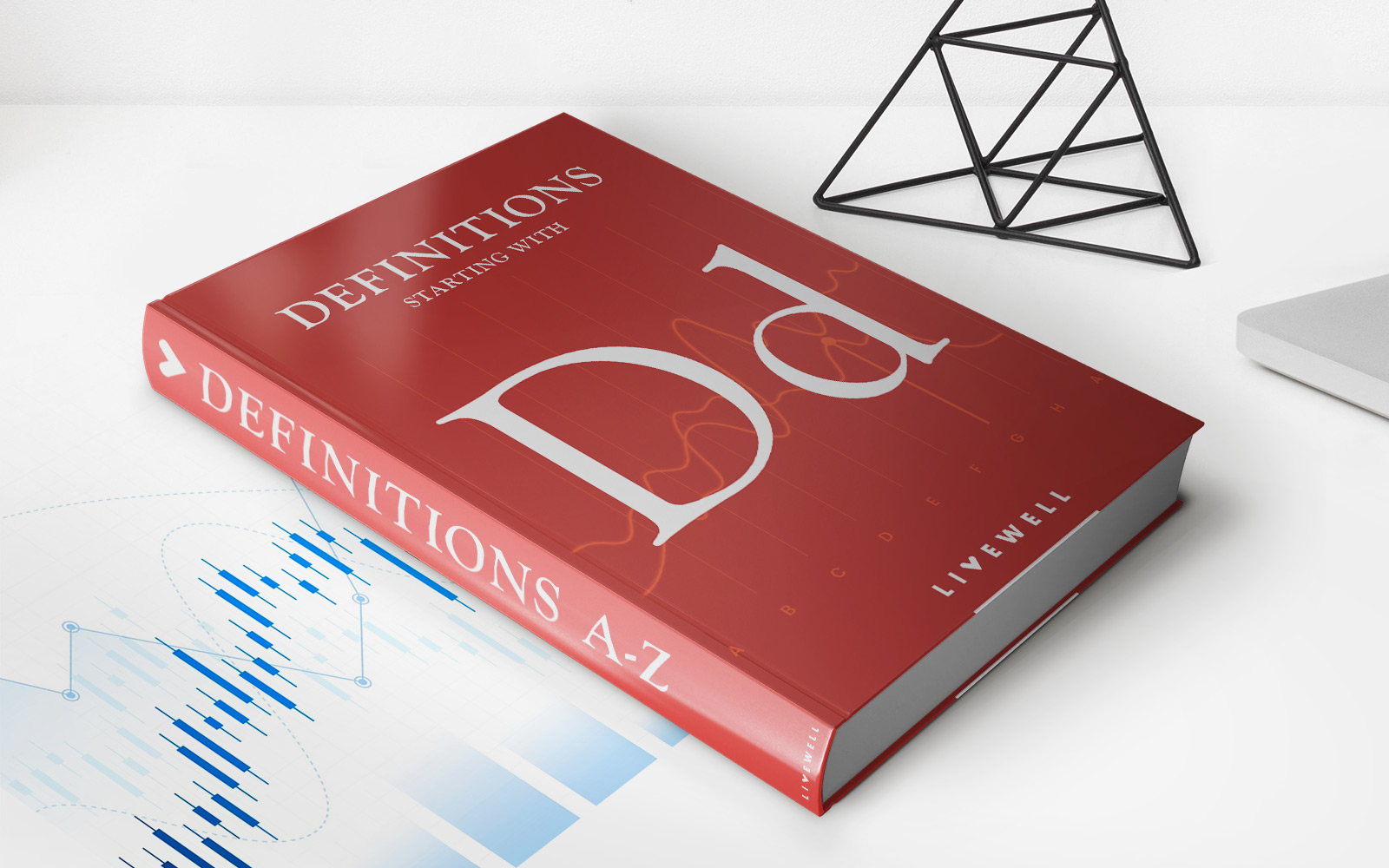

Finance
What Is SILAC Insurance
Published: November 22, 2023
Looking for finance solutions? Learn about SILAC Insurance and how it can help secure your financial future.
(Many of the links in this article redirect to a specific reviewed product. Your purchase of these products through affiliate links helps to generate commission for LiveWell, at no extra cost. Learn more)
Table of Contents
Introduction
Welcome to the world of insurance, where various types of coverage aim to protect individuals and businesses from potential risks. One such type of insurance that has gained popularity in recent years is SILAC Insurance. If you’re curious about what SILAC Insurance is and how it works, you’ve come to the right place.
SILAC, which stands for Savings and Investment Linked Assurance Companies, is a unique form of insurance that combines elements of traditional life insurance and investment. It offers policyholders the opportunity to not only secure financial protection for themselves and their loved ones but also to grow their wealth through investment vehicles.
SILAC Insurance policies, like other insurance products, require regular premium payments. However, unlike traditional life insurance, a portion of the premium goes towards securing insurance coverage, while the rest is invested in various investment instruments such as stocks, bonds, or mutual funds. This dual benefit of protection and potential investment growth makes SILAC Insurance an appealing option for individuals looking to secure their future financial stability.
While SILAC Insurance may sound similar to other types of investment-linked insurance, what sets it apart is the focus on long-term savings and investment goals. The primary objective is the accumulation of wealth over time, allowing policyholders to benefit from both insurance coverage and potential investment returns.
In the following sections, we will explore how SILAC Insurance works, the benefits it offers, any drawbacks to consider, and how it compares to other insurance types. By the end of this article, you’ll have a clear understanding of SILAC Insurance and its application in various scenarios. Let’s dive in!
Definition of SILAC Insurance
SILAC Insurance, also known as Savings and Investment Linked Assurance Companies Insurance, is a type of insurance that combines the features of traditional life insurance with investment opportunities. The purpose of SILAC Insurance is to provide policyholders with financial protection against unexpected events while offering the potential for long-term savings and investment growth.
In SILAC Insurance, policyholders pay regular premiums to the insurance company. The premiums are divided into two parts: a portion goes towards providing insurance coverage, and the remainder is directed towards investment funds. The invested portion of the premium can be allocated to various assets, such as equities, bonds, or mutual funds, depending on the policyholder’s risk tolerance and investment objectives.
One of the key features of SILAC Insurance is that it allows policyholders to participate in the performance of the underlying investment funds. This means that as the value of the investments fluctuates, the policyholder’s savings and potential returns may also vary. It offers the opportunity to grow wealth over time, potentially outperforming traditional savings accounts or fixed-income investments.
As with traditional life insurance policies, SILAC Insurance also provides a death benefit. In the event of the policyholder’s death, a predetermined amount, known as the sum assured, will be paid out to the beneficiaries. This death benefit ensures that loved ones are financially protected, even in the absence of the accumulated savings and investments.
SILAC Insurance differs from other investment-linked insurance products in that its primary focus is on long-term savings and investment goals. It provides flexibility and allows policyholders to adjust their investment portfolios based on their changing financial goals and risk appetite.
It’s important to note that SILAC Insurance involves risks, as the investment performance is subject to market fluctuations. The value of the investment funds can increase or decrease, depending on various factors such as economic conditions, market trends, and investment decisions. It is crucial for policyholders to understand the risks involved and carefully consider their investment objectives before opting for SILAC Insurance.
In the following sections, we will delve deeper into how SILAC Insurance works and explore the specific benefits and drawbacks associated with this type of coverage.
How SILAC Insurance Works
SILAC Insurance operates on the principle of combining life insurance coverage with investment opportunities. Here’s a breakdown of how SILAC Insurance works:
1. Premium Payments: Policyholders are required to make regular premium payments to the insurance company. The premium amount is divided into two components: one for insurance coverage and the other for investment purposes.
2. Insurance Coverage: Part of the premium goes towards securing life insurance coverage. The amount of coverage provided will vary depending on the policyholder’s age, health, and other factors. This coverage ensures that in the event of the policyholder’s untimely death, a predetermined sum assured will be paid out to the beneficiaries.
3. Investment Allocation: The remaining portion of the premium is allocated to various investment options based on the policyholder’s risk appetite and investment goals. These investment options can include stocks, bonds, mutual funds, or other financial instruments. The policyholder has the flexibility to choose their desired investment allocation or rely on the expertise of the insurance company’s investment team.
4. Investment Performance: As the allocated funds are invested in various assets, the policyholder’s savings and potential returns will be influenced by the performance of these investments. If the investment performs well, the policyholder may see growth in their savings and potential wealth accumulation. However, if the investments perform poorly, there is a risk of loss or lower returns.
5. Policy Adjustments: SILAC Insurance policies offer flexibility in terms of investment allocation. Policyholders can adjust their investment portfolios based on their changing financial goals, risk appetite, or market conditions. This allows them to actively manage their investments and make informed decisions to maximize their potential returns.
6. Surrender and Withdrawal: Policyholders may have the option to surrender their SILAC Insurance policies before the maturity date, subject to specific terms and conditions. This allows them to access their accumulated savings and investments. However, surrendering the policy may incur fees or surrender charges, reducing the overall payout.
7. Maturity and Payout: At the maturity of the policy, the policyholder will receive the accumulated savings and investment returns. This payout can be received as a lump sum or in periodic installments, depending on the policy terms and the policyholder’s preference.
It’s essential for policyholders to carefully review the terms and conditions of their SILAC Insurance policy to fully understand how it works and make informed decisions regarding premium payments, investment options, and policy adjustments. Understanding the risks and potential rewards is crucial in utilizing SILAC Insurance to meet long-term financial goals.
In the next section, we will explore the benefits of SILAC Insurance and why it may be an attractive option for individuals seeking comprehensive financial protection and investment growth.
Benefits of SILAC Insurance
SILAC Insurance offers a range of benefits that make it an appealing option for individuals looking to secure their financial future. Here are some key benefits of SILAC Insurance:
1. Financial Protection: SILAC Insurance provides policyholders with valuable life insurance coverage. In the event of the policyholder’s death, a predetermined sum assured will be paid out to the beneficiaries, ensuring that their loved ones are financially protected and taken care of.
2. Wealth Accumulation: SILAC Insurance allows policyholders to save and accumulate wealth over the long term. By allocating a portion of the premium to investment funds, policyholders have the potential to grow their savings and benefit from investment returns. This can provide a source of funds for future financial goals, such as retirement or education expenses.
3. Investment Flexibility: SILAC Insurance offers flexibility in terms of investment options. Policyholders can choose their desired allocation based on their risk tolerance and investment objectives. They can adjust their investment portfolio over time to align with changing financial goals or market conditions, ensuring they make the most of their investment opportunities.
4. Potential for Higher Returns: Unlike traditional life insurance policies, SILAC Insurance provides the potential for higher investment returns. By investing in various assets such as stocks, bonds, or mutual funds, policyholders have the opportunity to achieve higher growth compared to traditional savings accounts or fixed-income investments. However, it’s important to note that higher returns come with inherent investment risks.
5. Tax Benefits: SILAC Insurance may offer tax advantages, depending on the jurisdiction and the specific tax regulations. Policyholders should consult with a tax advisor to understand the potential tax benefits and implications of holding a SILAC Insurance policy. Tax benefits can contribute to overall wealth accumulation and financial planning.
6. Customized Coverage: SILAC Insurance policies can be tailored to meet specific financial needs and goals. Policyholders can choose the coverage amount, policy duration, and other policy features based on their individual circumstances and future plans. The flexible nature of SILAC Insurance allows individuals to create a personalized insurance and investment solution.
7. Professional Management: With SILAC Insurance, policyholders benefit from professional investment management. The insurance company’s team of investment experts monitors the performance of the investment funds and adjusts the portfolio as needed to optimize returns and manage risk. This expertise and oversight provide peace of mind, knowing that the investments are being managed by professionals.
It’s important to weigh the benefits of SILAC Insurance against individual financial goals, risk tolerance, and investment preferences. While SILAC Insurance offers potential advantages, it is essential to thoroughly understand the terms and conditions, fees, and potential risks involved before making a decision.
In the next section, we will explore the drawbacks and considerations associated with SILAC Insurance to provide a comprehensive perspective.
Drawbacks of SILAC Insurance
While SILAC Insurance offers numerous benefits, it is important to consider the potential drawbacks before deciding if it is the right insurance option for you. Here are some of the drawbacks and considerations associated with SILAC Insurance:
1. Investment Risk: SILAC Insurance involves investment in various assets such as stocks, bonds, or mutual funds. As with any investment, there is a level of risk involved. The value of the investment funds can fluctuate with market conditions, and there is a possibility of experiencing losses or lower than expected returns. Policyholders should carefully assess their risk tolerance and be prepared for potential investment volatility.
2. Fees and Charges: SILAC Insurance policies often come with fees and charges that can impact the overall returns. These fees can include administration fees, investment management fees, and surrender charges if the policy is terminated prematurely. Policyholders should fully understand the fee structure and factor them into their financial planning and decision-making process.
3. Policy Maturity: The maturity date of a SILAC Insurance policy may be relatively long-term. While this can be advantageous for long-term savings and wealth accumulation, it may not be suitable for those seeking more immediate liquidity or access to their funds. Policyholders should consider their short-term and long-term financial goals before committing to a SILAC Insurance policy.
4. Potential Underperformance: While SILAC Insurance offers the potential for higher investment returns, there is also a possibility of underperformance. Market fluctuations, economic conditions, and investment decisions can impact the performance of the underlying investment funds. Policyholders should be aware that their returns may not always meet expectations and should be prepared for possible periods of lower growth or negative returns.
5. Limited Control: With SILAC Insurance, policyholders have limited control over the investment decisions. The allocation of funds and investment strategies are typically managed by the insurance company or their appointed fund managers. While professional management can be advantageous, it means that policyholders have less control and autonomy over their investment choices.
6. Complexity: SILAC Insurance can be complex, especially for individuals who are not familiar with investment principles and terminology. Understanding the policy features, investment allocation, and potential risks requires some financial literacy. It may be helpful to consult with a financial advisor who specializes in insurance and investment to ensure a clear understanding of the policy before making a commitment.
7. Surrender Charges: If a policyholder decides to surrender their SILAC Insurance policy before its maturity, they may incur surrender charges or penalties. These charges can significantly reduce the overall payout and potentially result in a lower return on investment. It is important to consider the long-term commitment required before purchasing a SILAC Insurance policy.
It is crucial for individuals considering SILAC Insurance to carefully evaluate these drawbacks and assess their individual financial situation, goals, and risk tolerance. Consulting with a trusted financial advisor can provide guidance and help weigh the pros and cons of SILAC Insurance in the context of one’s overall financial plan.
In the next section, we will compare SILAC Insurance with other insurance types to provide a broader perspective on insurance options available.
Comparison with Other Insurance Types
When exploring insurance options, it is essential to compare SILAC Insurance with other types of insurance to understand the unique features and benefits they offer. Let’s examine how SILAC Insurance stacks up against some commonly known insurance types:
1. Term Life Insurance: SILAC Insurance differs from term life insurance in terms of both coverage and investment component. Term life insurance provides coverage for a specific period (term) and does not include an investment component. SILAC Insurance, on the other hand, combines life insurance coverage with investment opportunities, allowing policyholders to potentially accumulate wealth over time.
2. Whole Life Insurance: Whole life insurance offers lifelong coverage and includes a savings or cash value component. While SILAC Insurance also provides life insurance coverage, the investment component of SILAC Insurance allows policyholders to potentially grow their savings and benefit from investment returns. The investment aspect makes SILAC Insurance more suitable for those looking to combine protection with long-term wealth accumulation.
3. Universal Life Insurance: Similar to SILAC Insurance, universal life insurance combines life insurance coverage with an investment component. However, the investment options in universal life insurance are typically limited to fixed interest accounts or indexed accounts, while SILAC Insurance allows for a broader range of investment choices, including stocks, bonds, and mutual funds.
4. Variable Life Insurance: Variable life insurance also combines life insurance coverage with investment options. However, unlike SILAC Insurance, the investment component of variable life insurance is typically limited to variable investment options provided by the insurance company. SILAC Insurance offers more flexibility in investment choices, allowing policyholders to tailor their investment portfolio based on their risk tolerance and investment goals.
5. Traditional Investment Vehicles: When comparing SILAC Insurance with traditional investment vehicles, such as savings accounts, fixed deposits, or mutual funds, SILAC Insurance provides the added benefit of life insurance coverage. These traditional investment vehicles may offer more liquidity and flexibility but lack the protection element that SILAC Insurance provides.
Each insurance type has its own advantages and considerations, and the right choice depends on individual financial goals, risk tolerance, and preferences. SILAC Insurance offers a unique combination of life insurance coverage and investment opportunities, making it an appealing option for those seeking long-term wealth accumulation alongside financial protection.
Before selecting an insurance type, it is crucial to thoroughly understand the features, terms, costs, and potential returns of each option. Consulting with a qualified insurance advisor can help navigate the different insurance types and determine which one aligns best with your specific needs.
In the next section, we will explore the application and use cases of SILAC Insurance to gain a better understanding of how it can be utilized in various scenarios.
Application and Use Cases of SILAC Insurance
SILAC Insurance offers a range of applications and use cases for individuals looking to secure their financial future and grow their wealth. Here are some common scenarios where SILAC Insurance can be beneficial:
1. Retirement Planning: SILAC Insurance can be a powerful tool for retirement planning. By allocating a portion of the premium to investment funds, policyholders have the potential to accumulate wealth over time. This accumulated savings can serve as a source of income during retirement, providing financial security and supplementing other retirement savings vehicles like pensions or 401(k)s.
2. Education Planning: SILAC Insurance can be utilized to save for a child’s education expenses. By starting a SILAC policy early, parents can take advantage of the long-term investment growth potential. The accumulated savings and investment returns can be used to fund education costs, such as tuition fees, books, or even future college expenses.
3. Wealth Transfer and Estate Planning: SILAC Insurance can play a role in wealth transfer and estate planning strategies. By naming beneficiaries, policyholders can ensure that their loved ones receive a financial payout in the event of their death. The death benefit provided by SILAC Insurance can help heirs pay off debts, cover estate taxes, or maintain their standard of living.
4. Business Continuity: SILAC Insurance can be used to protect the financial stability of a business. Business owners can purchase SILAC policies to provide a financial safety net in case of the death of a key person or business partner. The insurance coverage can help cover expenses, debts, and ensure the business continues to operate smoothly during a difficult transition period.
5. Legacy Planning: SILAC Insurance can be utilized to create a lasting legacy. Policyholders can allocate a portion of the investment funds to a charitable organization or a trust, ensuring that their philanthropic goals are fulfilled even beyond their lifetime. This allows policyholders to support causes they care about while potentially benefiting from tax advantages.
6. Long-Term Financial Protection: SILAC Insurance provides a comprehensive solution for long-term financial protection. It combines life insurance coverage with potential investment growth, allowing policyholders to safeguard their financial well-being and accumulate wealth simultaneously. This can provide peace of mind and financial security for the policyholder and their loved ones.
By understanding the various applications and use cases of SILAC Insurance, individuals can identify how it aligns with their specific financial goals and aspirations. The flexibility and potential for wealth accumulation make SILAC Insurance a versatile option for those seeking comprehensive financial protection and growth.
In the final section, we will discuss the limitations and considerations that individuals should be aware of when opting for SILAC Insurance.
Limitations and Considerations
While SILAC Insurance offers numerous benefits, it is important to be aware of the limitations and considerations associated with this type of insurance. Here are some key factors to keep in mind:
1. Investment Risk: SILAC Insurance involves investing in various assets, which means there is a level of investment risk involved. The value of the investment funds can fluctuate with market conditions, potentially resulting in lower returns or even losses. Policyholders should carefully consider their risk tolerance and be prepared for potential investment volatility.
2. Long-Term Commitment: SILAC Insurance is typically a long-term commitment, with maturity dates that can span several years or even decades. Policyholders should consider their liquidity needs and have a long-term financial plan in place before choosing SILAC Insurance. Surrendering the policy before maturity can result in fees or charges that reduce the overall payout.
3. Fees and Charges: SILAC Insurance policies often come with fees and charges that can impact the overall returns. These can include administrative fees, investment management fees, and surrender charges in case of policy termination. Policyholders should carefully review and understand the fee structure before making a decision.
4. Market Fluctuations: SILAC Insurance policy returns are influenced by the performance of the underlying investment funds, which are subject to market fluctuations. Economic conditions, market trends, and investment decisions can impact the investment performance. Policyholders should be prepared for potential periods of lower growth or negative returns in volatile market conditions.
5. Limited Control: While SILAC Insurance offers investment flexibility, policyholders have limited control over the investment decisions. The allocation of funds and investment strategies are typically managed by the insurance company or their appointed fund managers. Policyholders should be comfortable with giving up some control over their investment choices.
6. Financial Literacy: SILAC Insurance can be complex, especially for individuals who are not familiar with investment principles and terminology. Understanding the policy features, investment allocation, and potential risks requires some financial literacy. It is important to seek advice from a qualified financial advisor who can provide guidance and ensure a clear understanding of the policy.
7. Policy Suitability: SILAC Insurance may not be suitable for everyone. It is important to assess individual financial goals, risk tolerance, and investment preferences before deciding on this type of insurance. Individuals with short-term liquidity needs or minimal risk tolerance may find other insurance types or investment vehicles better suited to their needs.
Considering these limitations and considerations allows individuals to make an informed decision about whether SILAC Insurance aligns with their specific financial goals and circumstances. It is crucial to carefully review the policy terms, understand the risks involved, and seek professional advice to ensure that SILAC Insurance is a suitable choice for one’s long-term financial planning.
With a thorough understanding of the limitations and considerations, individuals can make empowered decisions to effectively leverage SILAC Insurance for their financial security and wealth accumulation goals.
Now, let’s wrap up the article in the concluding section.
Conclusion
SILAC Insurance, with its unique combination of life insurance coverage and investment opportunities, offers individuals the potential for long-term financial protection and wealth accumulation. By allocating a portion of the premium to investment funds, policyholders can harness the power of investments and potentially achieve higher returns compared to traditional savings accounts or fixed-income investments.
Throughout this article, we’ve explored the definition and workings of SILAC Insurance, its benefits, drawbacks, and how it compares to other insurance types. SILAC Insurance provides policyholders with financial protection, potential investment growth, and flexibility in investment choices. It can be utilized in various scenarios, such as retirement planning, education savings, wealth transfer, and business continuity.
However, it’s important to consider the limitations and potential risks associated with SILAC Insurance. Investment volatility, long-term commitment, fees, and limited control should be carefully considered before opting for this type of coverage. Individuals are advised to enhance their financial literacy, seek professional advice, and thoroughly review policy terms and conditions to make informed decisions.
In summary, SILAC Insurance can be a valuable tool for individuals seeking a comprehensive approach to financial protection and long-term wealth accumulation. By carefully weighing the benefits and drawbacks, individuals can determine if SILAC Insurance aligns with their unique financial goals and risk tolerance.
Remember, choosing the right insurance product requires a deep understanding of your personal circumstances, financial objectives, and tolerance for risk. Take the time to evaluate your options, consult with experts, and make a decision that aligns with your long-term financial planning needs.
Now that you’ve learned about SILAC Insurance, you’re equipped with the knowledge to make an informed decision. Start exploring your options and take steps towards securing your financial future with SILAC Insurance.














